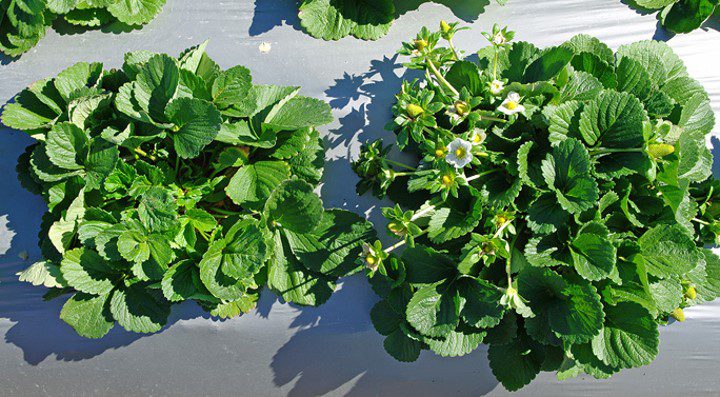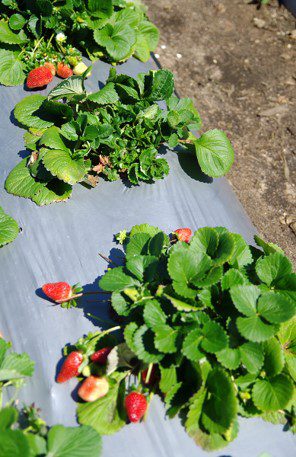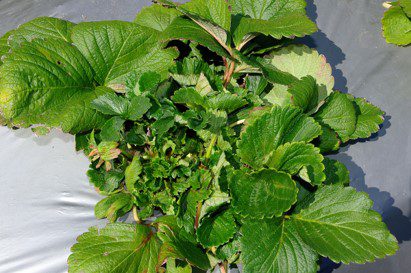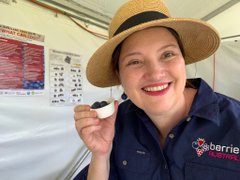PEST ALERT: FOLIAR NEMATODES IN STRAWBERRIES
About Foliar Nematodes
Foliar or bud nematodes (Aphelenchoides species) can cause significant crop loss in strawberries. While most nematodes occur in soil or in below-ground plant parts, these nematodes feed on above-ground plant parts. In strawberries, they like the sheltered environment of the crown, where their feeding damages emerging leaves and flowers. They have a very wide host range including weeds and natural vegetation, and can feed and survive on fungi, either in the soil or on decaying plant material when the host is not present. This makes these nematodes very difficult to control.
Symptoms include:
- stunted and deformed buds and flowers
- stunted and deformed leaves that are twisted, puckered, and/or crinkled
- tight aggregation of crowns
- reddened and stunted petioles
- flower stalks with aborted/partly aborted flowers.
Heavily infested plants will not produce fruit.
Management
There are currently no chemical control options for foliar nematode, so it is important to understand how to minimise losses through its spread.
Foliar nematodes need water to move. A thin film of water must be present for the nematode to move around the plant, and from plant to plant. Nematodes can also be splashed between plants by rainfall or overhead irrigation and can be transferred by workers if the foliage is wet.
To limit the spread of foliar nematode within the crop:
- inspect crops regularly
- remove and destroy infested plants and host weeds regularly*
- avoid working with infested plants when they are wet
Foliar nematodes also can live in surrounding host weeds and natural vegetation.
To limit spread through these pathways:
- remove decaying plant material where the nematode can survive and re-infest crops
- inspect surrounding vegetation for symptoms of foliar nematode
* After working with infested plants, wash your hands with soap and water and decontaminate all equipment with either 70% alcohol or 10% bleach.
Nematode Testing Available
Foliar nematode feeding damage can be confused with mite or insect damage. If you think you have foliar nematodes, send a sample to your local diagnostics laboratory for confirmation.
Confirmed cases should be reported to wayne.oneill@daf.qld.gov.au – YOUR DETAILS WILL BE KEPT CONFIDENTIAL, however we do need to know how widespread the pest is in order for industry to determine what level of resources to commit.
Affected plant (L) Healthy plant (R)
Affected plants
Photo credits: Wayne O’Neill DAF and an affected grower







